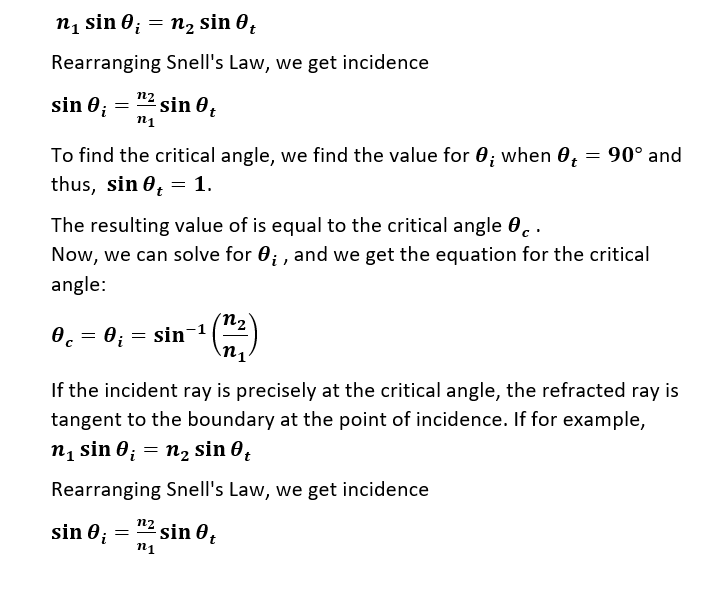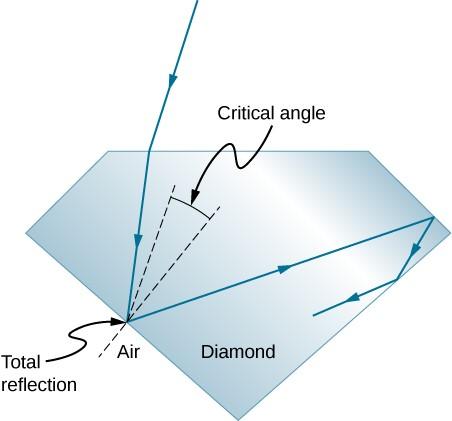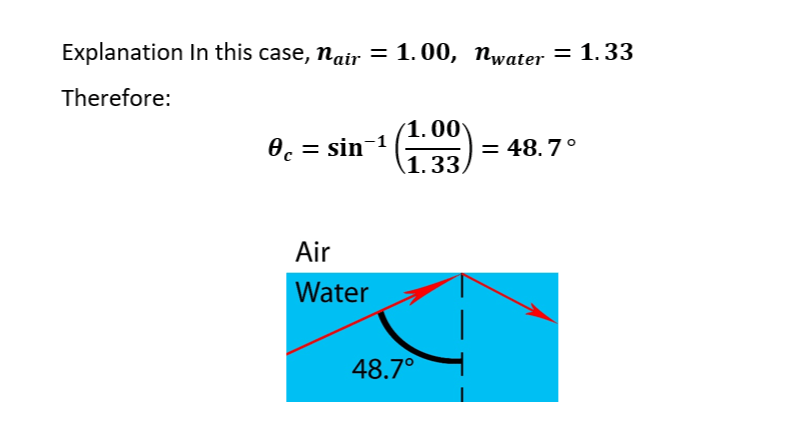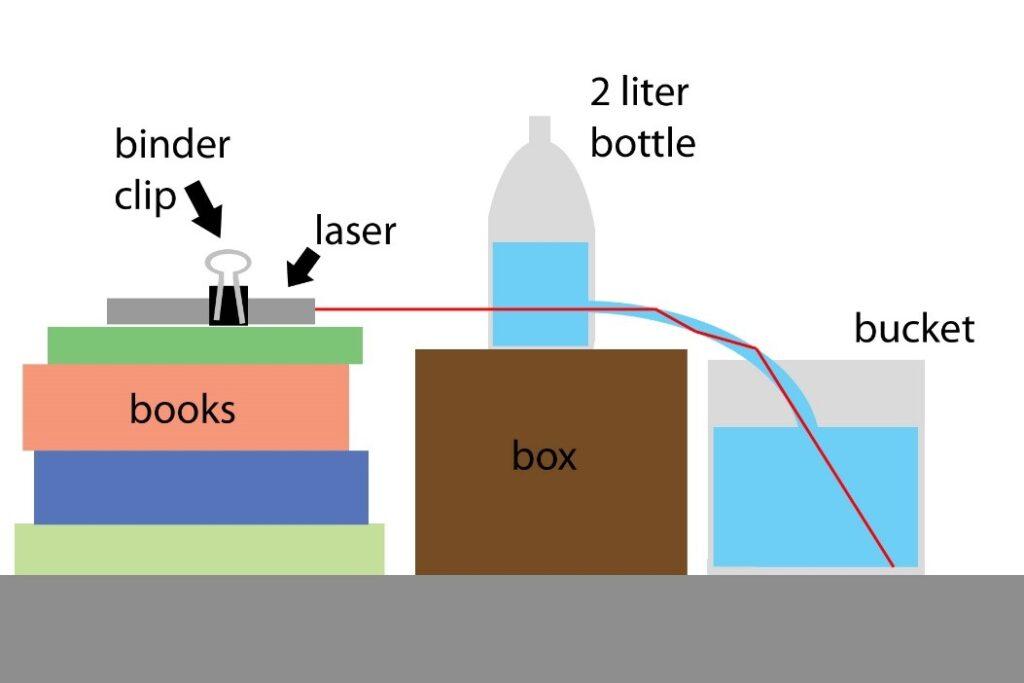
Ready to Serve!

Ready to Serve!
Total Internal Reflection Physics Investigatory Project PDF Class 12

Total internal reflection is an optical phenomenon that happens when a ray of light strikes a medium boundary at an angle larger than a particular critical angle with respect to the normal to the surface. If the refractive index is lower on the other side of the boundary and the incident angle is greater than the critical angle, no light can pass through and all of the light is reflected. The critical angle is the angle of incidence above which the total internal reflectance occurs.
When a light beam crosses a boundary between materials with different kinds of refractive indices, the light beam will be partially refracted at the boundary surface, and partially reflected. However, if the angle of incidence is greater (i.e. the ray is closer to being parallel to the boundary) than the critical angle – the angle of incidence at which light is refracted such that it travels along the boundary – then the light will stop crossing the boundary altogether and instead be totally reflected back internally. This can only occur where light travels from a medium with a higher [n1=higher refractive index] to one with a lower refractive index [n2=lower refractive index]. For example, it will occur when passing from glass to air, but not when passing from air to glass.

The critical angle is the angle of incidence above which total internal reflection occurs. The angle of incidence is measured with respect to the normal at the refractive boundary (see diagram illustrating Snell’s law). Consider a light ray passing from glass into air. The light emanating from the interface is bent towards the glass. When the incident angle is increased sufficiently, the transmitted angle (in air) reaches 90 degrees. It is at this point no light is transmitted into air.
The critical angle is given by Snell’s law.


A lesser-known aspect of total internal reflection is that the reflected light has an angle dependent phase shift between the reflected and incident light. Mathematically this means that the Fresnel reflection coefficient becomes a complex rather than a real number. This phase shift is polarization dependent and grows as the incidence angle deviates further from the critical angle toward grazing incidence. The polarization dependent phase shift is long known and was used by Fresnel to design the Fresnel rhomb which allows transforming circular polarization to linear polarization and vice versa for a wide range of wavelengths (colours), in contrast to the quarter wave plate. The polarization dependent phase shift is also the reason why TE and TM guided modes have different dispersion relations.
From glass to air the critical angle is about but it varies from one medium to another. The material that gives the smallest critical angle is diamond. That is why they sparkle so much! Rays of light can easily be made to ‘bounce around inside them’ by careful cutting of the stone and the refraction at the surfaces splits the light into a spectrum of colours! Relatively speaking, the critical angle for the diamond-air boundary is extremely small. This property of the diamond-air boundary plays an important role in the brilliance of a diamond gemstone. Having a small critical angle, light has the tendency to become “trapped” inside of a diamond once it enters. Most rays approach the diamond at angles of incidence greater than the critical angle (as it is so small) so a light ray will typically undergo TIR several times before finally refracting out of the diamond. This gives diamond a tendency to sparkle. The effect can be enhanced by the cutting of a diamond gemstone with a ‘strategically’ planned shape.


In this demo, light will continually reflect through the stream of water creating total internal reflection (TIR). The stream of water will ‘carry’ the light though, to the end of the stream.

